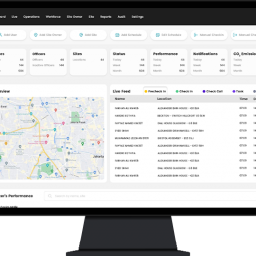Several firms around the country are looking for better ways to increase scheduling flexibility and reduce unpredictable pay expenses in light of a persistent labor shortage, high employee turnover, and inflation rates that are projected to create a jump in operating costs.
According to data from a recent study, organizations with more changeable hours and schedules that are fewer than ten days in advance suffer the most from employee turnover. In today’s market, retaining workers is more vital than ever, and many are turning to labor forecasting tools for assistance.
Labor forecasting has arrived, and it is here to stay for hourly workers. But, exactly, what is labor forecasting?
What is it?
In a nutshell, labor forecasting is a component of workforce management that assists organizations in determining where, when, what type, and how many personnel are required to successfully satisfy predicted client demand.
Yeah, so that’s a basic definition. But what exactly does labour forecasting entail? Breaking down labour forecasts into a simple equation may help you grasp it better.
Labor forecasting equation
Don’t worry; this math is as simple as it gets. The following equation can be used for Labor Forecasting:
Without a proper demand prediction, a company is just left with a labor model that is oblivious to the market’s external behaviors. This is not an exhaustive labor projection.
Without a labor model, a company is left with a jumble of predicted demand data and no actual plan for swiftly and efficiently deploying employees to satisfy that demand. Again, this is not an all-inclusive labor prediction.
To successfully estimate labor, a company must first predict future demand, and then create a model to distribute personnel and shifts based on that need.
Now that we have a deeper understanding of labor forecasting, let us look at its different components.
Demand Forecasting
Demand forecasting is the more well-known of the two labor forecasting components. It allows businesses to forecast things like revenue and foot traffic for the next weeks, giving them a better grasp of their staffing and scheduling needs.
Here are a few alternative approaches for anticipating demand:
Qualitative Forecasting
When a company does not have enough previous sales data to use as a reference, qualitative forecasting is the most basic of demand forecasts. It essentially entails completing market research on industry trends, seasonality, and targeted clients in order to develop highly broad demand forecasts.
Average of Past Dates
The average of prior dates approach, one of the most frequent types of demand forecasting, generates basic demand estimates in the hotel, food and beverage, and retail industries. But, its accuracy is restricted because it just takes sales data from your POS system, leaving out several elements that are important when estimating client demand.
It works by averaging historical sales data over a specific time period and uses these averages as tentative estimates for future demand.
For example, a user may decide to average their sales from last year’s Black Friday weekend as a projection for this year’s Black Friday. Alternatively, they can simply take sales averages from the previous three weeks and project them ahead on an ongoing basis.
AI Forecasting
Current advancements in AI and machine learning provide the most accurate demand forecasting solutions currently accessible.
Customer data (sales, foot traffic, orders), external data (weather, holidays, events, etc.), and demand patterns (seasonality, trends, weekdays) are fed into a machine learning algorithm to estimate demand. This algorithm then learns the links between all of the different data sources in order to forecast demand up to four weeks in advance.
This technology allows you to include a large range of demand-influencing aspects in your forecasts, which is something that more simple demand forecasting tools cannot do.
Labor Modeling
Once you’ve determined your demand projection, it’s time to create an efficient labor model. This gives you insight into your existing labor supply as well as the labor supply you’ll require in the future. It also assists you in determining the best approach to disperse workers across your organization.
Simple internal modeling
This type of modelling focuses solely on personnel availability and business operating hours. Its objective is to maintain only enough workers on hand to run the firm during operation hours.
Since it largely concentrates on internal requirements and avoids external demand variables, simple internal modelling typically results in difficulties with understaffing and overtime.
Delphi method
The Delphi technique, which is a step above internal modelling, anonymously surveys many distinct team leaders and decision makers in many locations to obtain an aggregate picture of an organization’s labor needs.
While the Delphi technique considers far more than personnel availability and operation hours, it remains inefficient due to its qualitative and anonymous character.
Ratio-based
AI determines ratios of required labor to satisfy predicted demand down to specific teams, regions, and roles using this advanced model. These ratios direct schedule managers away from potential over/understaffing difficulties and reduce total labor expenditures.
For example, if a business receives 20 pizza delivery orders on a Thursday, this model may advise a ratio of three delivery drivers and two cooks to effectively handle that demand. These ratios remove the guesswork from labor models, allowing managers to arrange their workforce based on client demand rather than internal constraints.
How labor forecasting helps your bottom line
Businesses everywhere are beginning to realize the benefits of improved forecasts as labor forecasting becomes increasingly linked with staff scheduling and workforce planning.
Here are some of the immediate benefits of accurate labor forecasting on your bottom line:
- Reduced labor costs: Aligning staffing levels with precise demand estimates minimizes unintentional overstaffing and reduces overtime costs.
- More strategic hiring: Labor forecasting identifies workforce gaps, allowing you to acquire individuals with the necessary skills and availability to meet your labor model requirements.
- Higher customer satisfaction: Customers notice when you consistently have adequate personnel coverage all day, every day, and for every shift. Understanding your expected demand and reacting correctly guarantees that your clients are never greeted with bad service, lengthy wait times, or irritating errors.
- Employee burnout is reduced: Just like your consumers, your employees will benefit from labour forecasting. Forecasting demand and knowing your labour ratios on a granular level eliminates understaffed schedules, ensuring that employees receive the assistance they require during busy shifts.
Implementing a labor forecasting strategy
Knowing labour forecasting is one thing; using it properly is quite another.
Using labour forecasting software is the most effective way to implement a labour forecasting plan. It automates the entire process, calculating predictive demand and providing labour ratios in minutes.
This type of technology is fast changing the way organizations manage their workers, and Vigilink.co.uk is at the front of this change. Here is why:
40% more accurate forecasts
Vigilink.co.uk‘s industry-leading AI generates sophisticated demand estimates based on previous sales, economic patterns, and external influences. This strategy outperforms the usual labor forecasting software, which merely uses past sales averages.
Granular labor ratios
Unlike most other labor forecasts, which only propose generic staff counts, Vigilink’s labor forecasting allows managers to view the number of employees per position required to satisfy anticipated demand for every location, team, and shift.
Automatic scheduling
Managers may automatically build schedules based on labor projections with a single click, saving hours of admin work formerly spent manually inserting personnel into weekly spreadsheets.

















